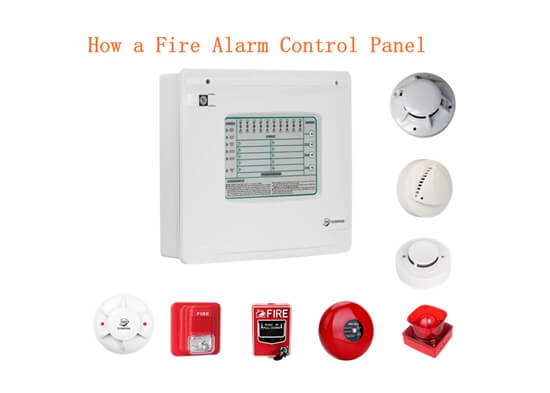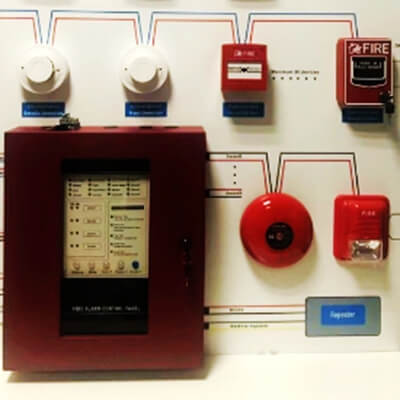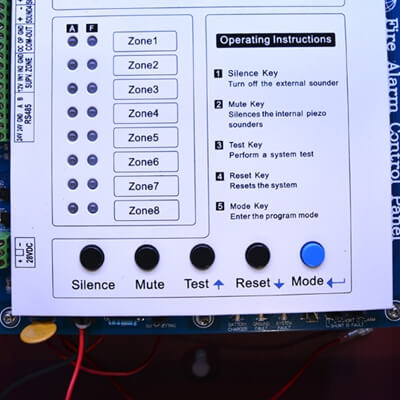A Fire Alarm Control Panel (FACP) is the brain of any fire protection system. It monitors, detects, and responds to fire emergencies, ensuring the safety of people and property. Here’s a straightforward breakdown of how it work:
How It Operates in 5 Steps
1. Continuous Monitoring
The FACP constantly checks all connected devices. Wiring is supervised to detect faults (e.g., breaks or shorts). If a circuit is disrupted, a “trouble” signal alerts users.
2. Detection
When a detector senses smoke, heat, or flames—or someone activates a manual pull station—the FACP receives an alert.
Conventional Systems: Identify the general zone (e.g., “Floor 2, East Wing”).
Addressable Systems: Pinpoint the exact device location (e.g., “Room 205”).

3. Alarm Activation
The FACP validates the signal to reduce false alarms. Once confirmed, it triggers:
Audible/Visual Alarms: Sirens and strobes warn occupants.
Safety Protocols: Shuts down elevators, unlocks exits, or stops HVAC systems to slow smoke spread.
4. Emergency Communication
The panel alerts off-site monitoring centers or emergency responders, providing details like the alarm type and location.
5. Post-Alarm Reset
After the threat is resolved, authorized personnel can silence alarms, fix faults, and reset the system.
-
 Fire Alarm Control Panel: The Central Hub of Building Safety (2025 Guide)
Fire Alarm Control Panel: The Central Hub of Building Safety (2025 Guide)Do you like ?0
Read more -
 How to Respond When Your Fire Alarm Control Panel Sounds an Alert ?
How to Respond When Your Fire Alarm Control Panel Sounds an Alert ?Do you like ?0
Read more -
 What is a Fire Alarm Control Panel (FACP) and How Does It Work?
What is a Fire Alarm Control Panel (FACP) and How Does It Work?Do you like ?0
Read more -
 What is the control panel in a fire alarm system?
What is the control panel in a fire alarm system?Do you like ?0
Read more -
 Do you know the theoretical knowledge of conventional control panel ?
Do you know the theoretical knowledge of conventional control panel ?Do you like ?0
Read more -
 what buttons of fire fighting control panel that need to push ?
what buttons of fire fighting control panel that need to push ?Do you like ?0
Read more








